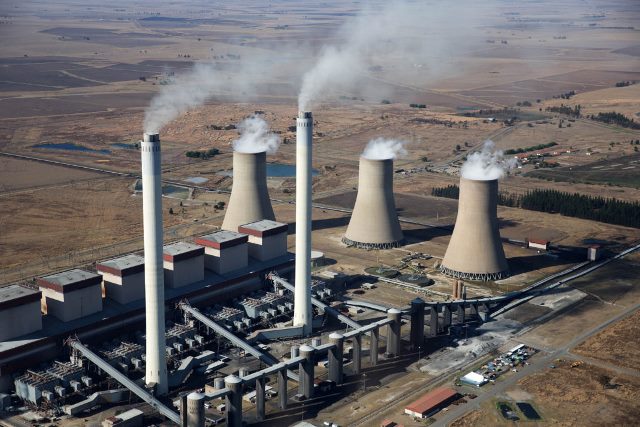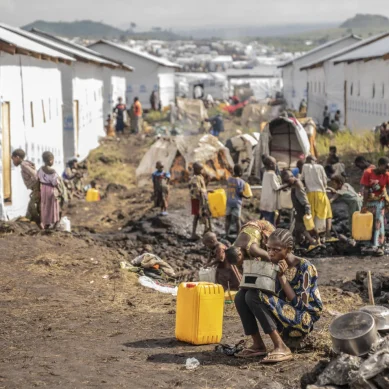
The 1,500mw Amu Coal project that expected to be built in Kwasasi on Lamu mainland is billed as the magic bullet that will hoist Kenya into industrial age.
Despite the evolution in the energy sector globally from fossil-based and hydro-based sources to solar, wind and geothermal, actors in the local power sector hold the view coal and gas are still relevant to Kenya’s push to a newly industrialised country as envisaged in Vision 2030 – the national Marshal Plan for economic and social development.
Actors in the industry who support coal and gas extraction argue that the energy sources are a necessary phase towards industrial development. They see it as ‘cheap energy’, but critics deride it as ‘dirty death’ or simply coal.
The Amu Power plant is a special purpose project being undertaken jointly by privately-owned Gulf Energy Ltd (developer and co-sponsor) and Centum Investment, a leading East African investment company that is listed on the Nairobi Securities Exchange.
“It is a fallacy to believe that the country is going to steer its way into the industrial revolution without cheap sources of energy, which, if you did a comparative study you will find that in all industrialised countries, coal was a significant factor in their growth,” Amu Power Chief Operating Officer Cyrus Kirima, said.
According to Amu Power, the Lamu coal fired power plant, the project is part of the Government of Kenya’s (GOK) blueprint for fast-tracked production of over 5,000mw of electricity for transforming Kenya in 40 months effective September 2013.
The coal power plant project is part of the government’s initiative for producing 25,000mw of power by 2020.
As the country transitions into a middle-income economy by 2030, supply of adequate, reliable, and affordable energy is a key foundation. This has been made even more urgent by Big Four Agenda that focuses on manufacturing, affordable housing, universal healthcare and food security. Cheap and reliable power cuts across the four agenda, hence the focus on Lamu energy potential.
LAPSSET Director General Silvester Kasuku has in the past pointed out that as the country transitions into a middle-income economy by 2030, supply of adequate, reliable and affordable energy is a key foundation.
The LAPSSET, an acronym for Lamu Port, South Sudan, Ethiopia Transport Corridor is eastern Africa’s largest and most ambitious infrastructure project bringing together Kenya, Ethiopia and South Sudan.
This mega project consists of seven key infrastructure projects starting with a new 32-berth port at Lamu, interregional highways from Lamu to Isiolo in northern Kenya, Isiolo to Juba (South Sudan), Isiolo to Addis Ababa (Ethiopia), and Lamu to Garsen (Kenya), crude oil pipeline from Lamu to Isiolo, then Isiolo to Juba; product oil pipeline from Lamu to Isiolo, Isiolo to Addis Ababa.
The project also includes interregional standard gauge railway lines from Lamu to Isiolo, Isiolo to Juba, Isiolo to Addis Ababa, and Nairobi to Isiolo; three international airports: one each at Lamu, Isiolo and Lake Turkana; three resort cities: one each at Lamu, Isiolo and Lake Turkana; and the multipurpose high grand falls dam on Tana River.
Collectively the three projects once completed and operational will contribute at least 2,000mw to the national grid but until they are actually up and running the projects remain bedevilled by a host of issues ranging from unresolved land issues to environmentalists’ concerns that remain a thorn in the flesh of investors.
“The anticipated increase in demand should be seen in light of the need to power on-going and future projects like the standard gauge railway, Konza Technopolis, Lamu Seaport, LAPSSET special economic zones, the crude oil pipelines, steel smelting industry and the LAPPSET resort cities, all of which require reliable, stable and affordable power,” Kasuku explains.
Conservationist and Save Lamu pressure group chairman Walid Ahmed who has been at the forefront of opposing the project, questions the “hurry” with which the project is being implemented despite resistance by Lamu residents.
“There has been a lot of doublespeak when it comes to the Amu Power Project right from the President to the former and present governor, and MCAs in the county. No one offers a clear explanation about why we should have the project within a World Heritage Site in the first place,” former Woman Representative Shakila Abdalla questions.
Among the local leaders she has been the most outspoken critic of the project arguing that the project is likely to reverse the growth of the county’s Blue Economy.
The sentiments are echoed by World Wide Fund Kenya Lamu coordinator John Bett. Mr Bett expressed fear the project is likely to endanger marine and land wildlife.
“There is immense evidence supporting claims by environmentalists that the Amu coal plant, if constructed is likely to do more harm to Lamu’s economy in the long run than the gains that will be made by electricity generation,” Bett states.
However, Amu Power Chief Operating Officer Cyrus Kirima states that the kind of power plant that will be set up in Lamu will be the most advanced and ecologically friendly.
The ultra-super critical technology to be used is said to be an advanced coal production technology that can deliver up to 49 per cent efficiency rates, significantly higher than the global average of 33 per cent that is common even in industrialised countries such as China.
Kirima says this will increase the power output, reduce emissions and fuel consumption.
He further adds that studies have shown that Ultra Super Critical technology has the same levels of emission as Natural Gas-Powered plants.
This argument has been met with strong reservations by conservationist and Lamu Cultural Promotion Group Secretary General Feiswal Mirji who says that it is the kind of technology that Amu Power Plant is proposing is only meant to hoodwink Lamu residents into accepting the project.
“The Amu Power plant, if allowed, it will be the end of Lamu’s fishing and tourism economy because all the effluents will be released into both the air and the sea,” Mirji says.
He contends that Lamu’s tourism and agriculture will come under threat, and most activities such as farming, fishing and pastoralism are likely to be no more once the project takes off.
“We have been put in a very precarious situation, where, if we oppose the project, we are called opponents of progress and if we accept the project, we will be doomed forever for not calling for a thorough environmental assessment report given the possible corrosive and poisonous effluents from the plant,” the conservationist argues.
But according to Kirima, “The Ultra Super Critical Power Plant is the latest in coal power plant energy generation and it has been set up to ensure that no waste leaves the plant and little effusions as evidenced by a recent stakeholders tour of similar power generation plants in Malaysia and Turkey.”
The positions taken by either side raise more questions than answers, with some leaders such as Mkomani Ward Representative Yahya Ahmed saying the project right from the onset was steeped in controversy with regard to environmental impacts concerns being raised.
“The Kwasasi farmers who own the land on which the plant will be built can be duped into a deal without commensurate compensation because there is already a title deed owned by LAPSSET that no one, not even the National Land Commission is talking about,” Hindi Ward Representative Anab Hajj observes.
A National Land Commission senior official expressed confidence Kwasasi farmers will be facilitated paid based on a land-to-land compensation arrangement. It is not yet known when this will be done.
LAPSSET Director General Silvester Kasuku distanced himself from the Kwasasi land controversy, saying all land management and transfer issues are handled by NLC.
Kwasasi Farmers Association official Abdulrahman Aboud voiced his dismay about lack of definite solution, especially the impasse over compensation.
The company’s PR consultancy firm, Africa Practice, in a statement given to the media on behalf of Amu Power, said:
“The potential of the Lamu coal power project to transform the lives of Lamu County residents and the country is limitless. The project will directly and indirectly create jobs through its initial $ 1.95 billion (Ksh200 billion) investments that will go into the development phase as well as another set of jobs during execution and through the plants value chain.”
According to the statement the project will create 1,761 direct jobs for locals – 1,590 skilled and 171 semi-skilled.
“The project will have a seven times multiplier effect due to industries supported by affordable power and direct business through the supply chain. The power plant will support other initiatives including steel smelting, cement manufacture, service industries, motor vehicle assembly, ICT parks, etcetera. Upon addition to the grid, the Lamu Power Plant is expected to reduce power generation cost by 12.2 per cent,” it reads.
The firm projects that when reliance on HFO and diesel power generators drops to zero per cent, the cost of power will come down by 36 per cent, hence bring down the cost of doing business.
At the political level, the project enjoys back with the local MP giving the Amu coal project all the clear.
“Something must give in the way the Amu Power project issue is being handled with regard to land compensation for the more than 300 Kwasasi Farmers who will be affected by the project once it is built and they are forced to move to the way the conservationist interests and queries also needs be addressed if this project is to be successfully owned by the Amu people,” Lamu East MP Athman Shariff notes.
– A Tell report











